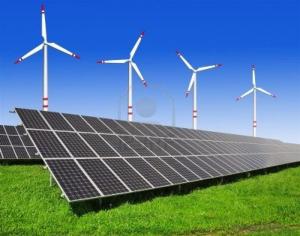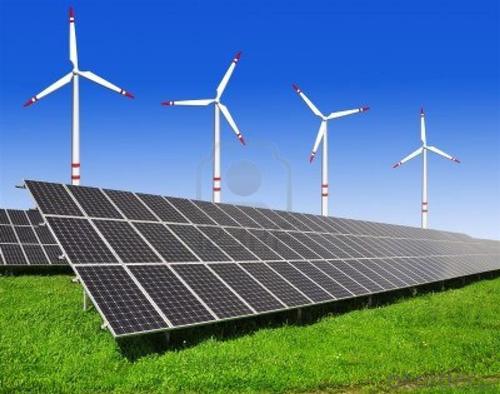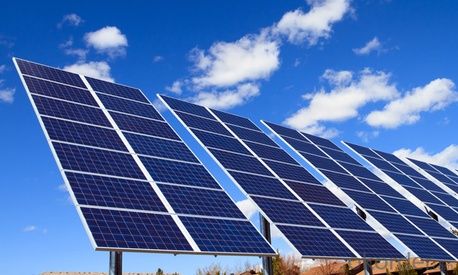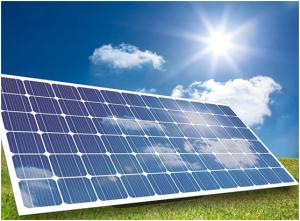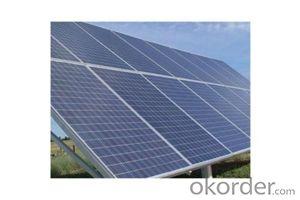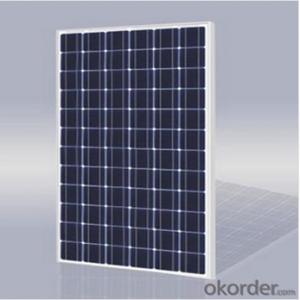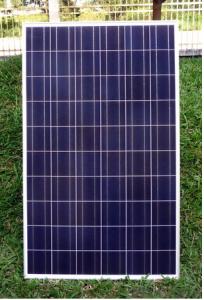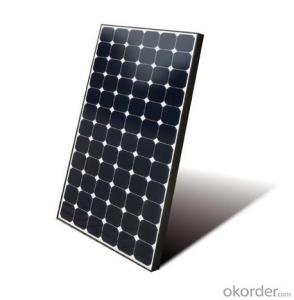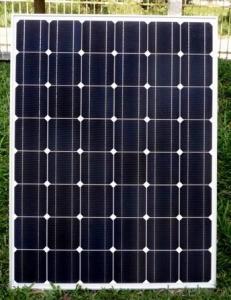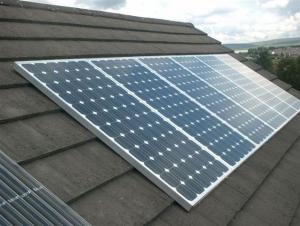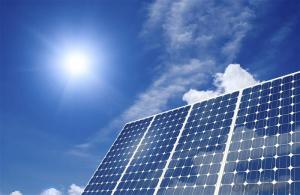40W Pid Solar Panels CNBM Monocrystalline Silicon Panel for Home Use
- Loading Port:
- China main port
- Payment Terms:
- TT OR LC
- Min Order Qty:
- 100 watt
- Supply Capability:
- 1000 watt/month
OKorder Service Pledge
OKorder Financial Service
You Might Also Like
Specification
40W CNBM Monocrystalline Silicon Panel for Home Using
Production description
Most solar modules are currently produced from crystalline silicon (c-Si) solar cells made of multicrystalline andmonocrystalline silicon. In 2013, crystalline silicon accounted for more than 90 percent of worldwide PV production, while the rest of the overall market is made up of thin-film technologies using cadmium telluride, CIGS and amorphous silicon[7]Emerging, third generation solar technologies use advanced thin-film cells. They produce a relatively high-efficiency conversion for the low cost compared to other solar technologies.
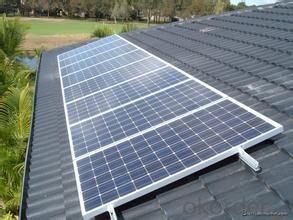
Feature
1.High conversion efficiencies resulting in superior power output performance.
2.Outstanding power output even in low light or high temperature conditions
3.Optimized design for ease of soldering and lamination
4.Long-term stability,reliability and performance
5.Low breakage rate
6.Color uniformaity
Physical characteristic
1. Rigorous quality control meets the highest international standards.
2. High-transmissivity low-iron tempered glass, strong aluminium frame.
3. Using UV-resistant silicon.
4. IS09001/14001/CE/TUV/UL
- Q: Can solar panels be installed on a residential community or housing development?
- Yes, solar panels can be installed on a residential community or housing development. In fact, many residential communities and housing developments are embracing solar energy by incorporating solar panels into their buildings or providing shared solar systems for the residents. This not only helps to reduce the carbon footprint, but also allows residents to save on electricity costs and increase the overall sustainability of the community.
- Q: What is the purpose of solar panels?
- The purpose of solar panels is to harness the energy from the sun and convert it into electricity, providing a renewable and sustainable source of power for various applications.
- Q: Hello, I am shopping for solar panels for my home and there are so many to choose from. My house uses 40 Kw of power a day. If you had to choose from the output power of a solar panel from below, which one would you choose and why would you choose it? 2 Volts 4 Amps 48Watts2 Volts 8.5 Amps 02Watts6 Volts 7 Amps 2Watts24 Volts 4.2 Amps 00.8Watts24 Volts 8 Amps 95Watts
- There is more to sizing a system than simply selecting panels. I would suggest that you contact a solar installer to do a bid on your system. The quote should be free, and you can always say no. If a house used 40 kWh per day in our area, that would suggest a 6 kW array to offset substantially all the energy usage over the course of a year. Serious panels tend to be in the neighborhood of 200 watts nowadays, and that would mean 30 of those. You could size the system smaller, of course, if you wanted to offset a smaller percentage of your electricity. If there is any way that you can reduce the energy requirments, that will save you more money than putting in big solar. For example, if you can cut that in half by adding insulation and more efficient appliances, you will save more money than if you got a big array to power everything as-is.
- Q: How much space is required for solar panel installation?
- The amount of space required for solar panel installation depends on various factors, including the size and number of panels, their efficiency, and the energy needs of the property. On average, a residential solar system typically requires around 100-400 square feet of roof space per kilowatt of installed capacity. However, ground-mounted systems can require larger areas, while more efficient panels may require less space. It is recommended to consult with a solar installer to assess the specific space requirements for your installation.
- Q: I've been thinking and I'd like to have solar panels installed on my roof at some point to help reduce our electricity consumption- but I live in IL and in the winter it frequently snows. Is there such a thing as heated solar panels so they don't get coated w/ice or snow? Are solar panels even a feasible option in IL? Thank you, Anna
- My brother-in-law has 4 solar panels on his property. Each one is more that 4 times the size of a ping pong table and they automatically swing toward the brightest light (I.e., the sun). They generate electricity almost every day, unless it is very cloudy. He lives in Northern NJ, almost as far north as Chicago. They have been up for about 6 years and seem to be reliable. I'm not sure that a single static panel on your roof would generate enough to make it viable. But contact some people in your area to see how theirs are working out. Also contact your building inspector and electrical inspector to find out how to do the job 'to code'.
- Q: Can solar panels be installed on a gas station or convenience store?
- Yes, solar panels can be installed on a gas station or convenience store. In fact, many gas stations and convenience stores have already embraced solar energy as a way to reduce their carbon footprint and lower energy costs. By installing solar panels, these establishments can generate renewable electricity and potentially even sell excess power back to the grid.
- Q: How do solar panels affect property value?
- Solar panels can have a positive impact on property value by increasing the overall value of a property. Studies have shown that homes with solar panels tend to sell for a higher price compared to similar homes without solar installations. The energy savings and potential income from selling excess electricity to the grid can make a property more attractive to buyers, leading to a higher selling price and increased property value.
- Q: All I ever heard is how easy it is to get solar panels for a persons home. I live in Arkansas and to do my house it would cost 25000 that I dont have and No state incentives. So where do I go and get these free solar panels? Thanks for the help
- How photograph voltaic Cells artwork by making use of Scott Aldous interior this text a million. creation to How photograph voltaic Cells artwork 2. Photovoltaic Cells: changing Photons to Electrons 3. How Silicon Makes a photo voltaic cellular 4. Anatomy of a photo voltaic cellular 5. capability Loss in a photo voltaic cellular 6. photograph voltaic-powering a house 7. fixing photograph voltaic-skill themes 8. photograph voltaic-skill execs and Cons 9. so plenty extra assistance 0. See all actual technology articles you have probable seen calculators that have photograph voltaic cells -- calculators that never choose batteries, and often times do no longer even have an off button. as long as you have sufficient gentle, they supply the impact of being to artwork perpetually. you will possibly have seen larger photograph voltaic panels -- on emergency highway indicators or call boxes, on buoys, even in parking plenty to skill lighting fixtures. regardless of the reality that those larger panels are not as undemanding as photograph voltaic powered calculators, they're obtainable, and not that no longer hassle-free to % out in case you recognize the place to look. There are photograph voltaic cellular arrays on satellites, the place they're used to skill the electrical powered platforms. you have probable additionally been listening to bearing directly to the photograph voltaic revolution for the final 2 a protracted time -- the thought at some point we can all use unfastened electrical energy from the sunlight. that could be a seductive promise: On a vivid, sunny day, the sunlight shines approximately a million,000 watts of capability per sq. meter of the planet's floor, and if shall we assemble all of that capability shall we certainly skill our homes and workplaces for unfastened.
- Q: What is the role of inverters in solar panel systems?
- The role of inverters in solar panel systems is to convert the direct current (DC) electricity produced by the solar panels into alternating current (AC) electricity, which is the type of electricity used in homes and businesses. Inverters also ensure that the AC electricity produced is synchronized with the grid, allowing for efficient utilization or storage of energy, and enabling solar panel systems to feed excess electricity back into the grid.
- Q: I live in a higher LATITUDE so in the winter months, there is a limitation in the amount of sunlight available, but will this impediment restrict the ability of solar panels to function due to the lack of sunlight involved?
- Solar panels are *more* effective in places with abundant sunlight, but can be used anywhere that there is light. The problem is an economic one. Solar panels are expensive and can only produce so many watts per square meter. If you have less sunlight, you'll need more panels to get the same amount of power. Germany has a relatively high latitude, and are reported to make extensive use of solar panels (funny, I spent 2 weeks there last month and saw very few panels). The reason for their use of the panels is that their government offsets the cost of installing them through subsidies. Other governments have similar programs.
Send your message to us
40W Pid Solar Panels CNBM Monocrystalline Silicon Panel for Home Use
- Loading Port:
- China main port
- Payment Terms:
- TT OR LC
- Min Order Qty:
- 100 watt
- Supply Capability:
- 1000 watt/month
OKorder Service Pledge
OKorder Financial Service
Similar products
Hot products
Hot Searches
Related keywords
